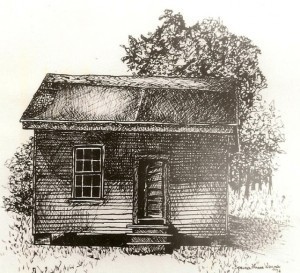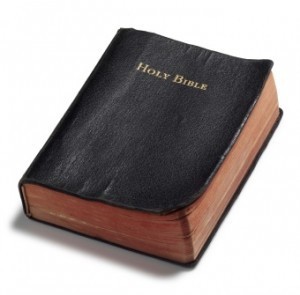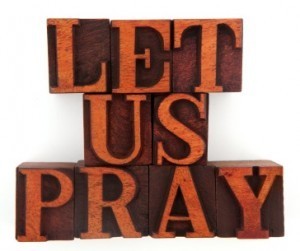The Church Was Black and White, Part 2. Commandments, Rules, Slaves, Owners.
The last post began to examine a document from an old Southern Presbyterian church. It was written in 1909 to review and celebrate 100 years of the church’s history.
Thank you for all your thoughtful comments! This document surely does prompt many interpretations.
The moral “discipline” of the church seemed to apply to both slaves and masters. The Session met to judge infractions by members and mete out punishments. They suspended offenders from church for given periods—or “indefinitely.”

Session House. By Spencer Wagner (sp?) in 1978. Property of Mariann Regan.
Moving on, the author of the document writes,
“As we read these records of the past we are constantly reminded of the institution of slavery, and of the great interest in the welfare of black brothers manifested by our fathers. . . .”
On the “welfare of black brothers” he offers the following thoughts, quoted here in sequence:
“Ample provision was made for the religious instruction of this unfortunate class. Under date of June 1837, the Records show the following action:
‘Resolved [that the Session meet with a delegation from another church] for the purpose of employing a missionary for the improvement of the colored people.’ . . . A shed, with comfortable seats, was erected near the church, for their benefit, and there the pastor preached for them regularly. . . . This service was held before the regular church service, and they were then required to repair to the galleries of the church. . . . As a result of these efforts in their behalf, 184 were received into the communion of the church during the pastorate of Mr. V, who was especially zealous in his work among them.
“The following ‘Rules for the Regulation of Colored People’ adopted in 1847, will prove of interest:
“Rule 1st. That the colored people required when they arrive at the church in time, to repair immediately to the shelter constructed for their accommodation.
“Rule 2nd. That no colored person, or persons, will be allowed to come to the church without a good excuse, after regular service is commenced.
“Rule 3rd. That all colored persons, from about ten years old, be required, with the exception of such as have infants under their care, or are nurses, for white persons, to go to the gallery, before services commence in the church.
“Rule 4th. That colored women with their children be required to stay in an orderly manner, immediately about the church, and that nurses of course be subject to their owners.
“Rule 5th. That boys in attendance on their owners will not be allowed to come down from the gallery until service is over, except in case of rain, or they are called by their owners.
“Resolved. That four persons be requested by this church to see that the foregoing rules be observed, and when they are violated, to discipline, or cause to be disciplined the person, or persons, who may violate them—the mode of discipline to be whipping.”
Here I’ll include a previous passage, with further examples of church policy on the behavior of black members.
“The following black members were admonished and suspended for irregularities in their Christian character: Billy, the property of W, for playing the Violin where a party of blacks were collected together, Arthur the property of X, for offering to sell eggs on the Sabbath, Binah and Cato, the property of Y, for quarreling.”
In the practices of this church, the beliefs of Christianity and the regulations of slavery appear to be combined and pieced together. To some it may have seemed like a natural “fit,” but to others perhaps not. The abolitionists thought that slavery was fundamentally un-Christian, and that abolishing the institution would help save the souls of the slave masters.
Religion and slavery were both powerful institutions in the South. Some Bible verses were used to justify slavery, while others could be used to condemn it.
Liv @claimingkin, an exceptionally generous reader, has shared with me relevant Scripture and interpretive Christian teachings. I am indebted to her references for the following concepts and passages:
On the one hand, the model of the Suffering Servant, in imitation of Christ, could assure a slave that suffering under an unjust master was good in the sight of God.
The vast range of Bible verses about slavery includes this sample:
1 Peter 2:18: “Slaves, submit yourselves to your masters with all respect, not only to those who are good and considerate, but also to those who are harsh.”
1 Timothy 6:1-2: “Let all who are under a yoke as slaves regard their own masters as worthy of all honor, so that the name of God and the teaching may not be reviled.”
Ephesians 6:9: “And masters, treat your slaves in the same way. Do not threaten them, since you know that he who is both their Master and yours is in heaven, and there is no favoritism with him.”
Colossians 4:1: “Masters, provide your slaves with what is right and fair, because you know that you also have a Master in heaven.”
Galatians 3:28: “There is neither Jew nor Greek, there is neither slave nor free, there is no male and female, for you are all one in Christ Jesus.”
The historical document of this church allows us to glimpse the daily lives and behavior of our ancestors, both black and white. It lets us make better-informed guesses about their inner lives—their minds and hearts.
What are your own thoughts and interpretations? What does this document suggest to you about how our black and white ancestors viewed themselves, each other, their religion, and their customs?
(Thought questions. No such thing as a wrong answer.)





